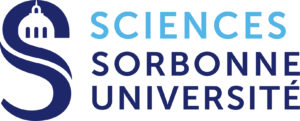Seminars
Séminaire SIMM - Meng Wang (Hebrew University)
Meng Wang (Racha Institute of Physics, Hebrew University of Jerusalem, Israel)
Supershear cracks in Tensile Fracture : How fast can materials break ?
Brittle materials fail by means of rapid cracks. At their tips, tensile cracks dissipate elastic energy stored in the surrounding material to create newly fractured surfaces, precisely maintaining `energy balance' by exactly equating the energy flux with dissipation. Using energy balance, fracture mechanics perfectly describes crack motions ; accelerating from nucleation to their maximal speed of c_R, the Rayleigh wave speed. Beyond c_R, tensile fracture is generally considered to be impossible [1], [2].
Recently, the potential emergence of an entirely new branch of fracture that is not incorporated in classical fracture mechanics has been predicted in lattice models to occur at high applied stretch [3], [4]. This theory predicts tensile cracks that are able to exceed the shear wave velocity, c_s, and potentially even the dilatation waves speed, c_p [5]. Here, by the use of brittle hydrogels, we experimentally demonstrate that such a wholly new and different class of tensile cracks indeed exists. We demonstrate that their dynamics are not governed by the principle of energy balance, the cornerstone of the classical theory of fracture. This new branch of cracks smoothly surpasses c_s to reach unprecedented speeds that approach the speed of dilatation waves. The transition from `classical' cracks to these `supershear' cracks takes place at critical values of applied strains. We, furthermore, show that the values of these, rather moderate (18-20%), critical strains are intimately related to the microscopic material structure. While it is still unclear whether this intriguing fracture mode is indeed that predicted theoretically by Marder [3], it is clear that these extreme tensile cracks have never before been clearly observed in experiments. This new mode of tensile fracture represents a fundamental paradigm shift in our understanding of ‘how things break'.
[1] L. B. Freund, Dynamic fracture mechanics. Cambridge university press (1998).
[2] K. B. Broberg, Cracks and Fracture. Academic Press (1999).
[3] M. Marder, Supersonic Rupture of Rubber, J. Mech. Phys. Solids, 54, 491–532 (2006).
[4] T. M. Guozden, E. A. Jagla, and M. Marder, Supersonic cracks in lattice models, Int. J. Fract., 162, 107–125 (2010).
[5] C. Behn and M. Marder, The transition from subsonic to supersonic cracks, Philos. Transact. A Math. Phys. Eng. Sci., 373, 20140122 (2015).
- Seminar archive
- Recent seminars
- Seminars
Recent seminars (12)
-
2025 04 24. SEMINAIRE SIMM Interne - Emma Houllegatte - Kehsovann Var
Jeudi 24 avril de 14h00 à 15h00 - Charpak
-
2025 04 17. SEMINAIRE SIMM - Loic Assaud (IMAP, ESPCI ENS)
Jeudi 17 avril de 14h00 à 15h00 - Charpak
-
SEMINAIRE SIMM
Jeudi 10 avril de 14h00 à 15h00 - Charpak
-
Journée scientifique SIMM
Du 2025 à 13h30 au 0001 à 00h00 - IPGG
-
SEMINAIRE SIMM
Du 2025 à 11h00 au 0001 à 00h00 - Charpak
-
SEMINAIRE SIMM - Satish Kumar (University of Minnesota)
Mardi 8 avril de 11h00 à 12h00 - CharpakSatish Kumar
Department of Chemical Engineering and Materials Science, University of MinnesotaDroplet dynamics near topographical features
While solid substrates are often idealized as being perfectly smooth, all real
su(...)
-
SEMINAIRE SIMM
Jeudi 3 avril de 14h00 à 15h00 - Charpak
-
SEMINAIRE SIMM
Jeudi 27 mars de 14h00 à 15h00 - Charpak
-
Journée scientifique SIMM
Du 2025 à 13h00 au 0001 à 00h00 - Mezzanine
-
Journée scientifique SIMM
Du 2025 à 13h00 au 0001 à 00h00 - Holweck
-
SEMINAIRE SIMM
Jeudi 20 mars de 14h00 à 15h00 - Charpak
-
SEMINAIRE SIMM
Jeudi 13 mars de 14h00 à 15h00 - Charpak


